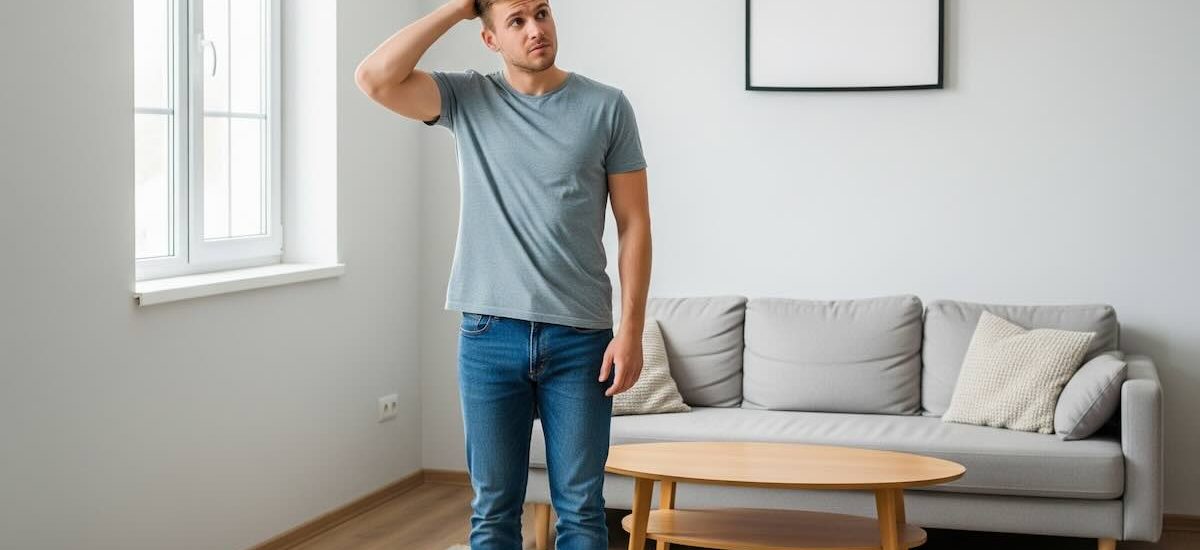Start with Smart Budgeting and Preparation
Before you buy anything, it’s essential to create a realistic budget for your new apartment living. Consider all costs involved in your move, including rent, deposits, utilities, and day-to-day necessities. Not planning well can lead to surprises that stress your finances right after moving in.
Typical expenses to include:
- Security deposit and application fees, which can range from one to two months’ rent
- First and last month’s rent upfront in some cases
- Utility set-up and monthly bills (electricity, gas, water, internet)
- Moving supplies, transportation costs, and cleaning services before move-in
- Renter’s insurance, which safeguards your belongings
Pro tip: Avoid spending more than 30% of your monthly income on rent to maintain financial balance. Use budgeting apps or a simple spreadsheet to track all move-related expenses and ongoing monthly costs.
The Bedroom: Your Restful Sanctuary
Your bedroom is key to your well-being, it should help you relax and recharge. According to the CDC, keeping your bedroom quiet, relaxing, and at a cool temperature supports better sleep. The essentials here include a quality mattress that supports comfort and good sleep hygiene. There’s evidence that medium-firm mattresses can reduce pain and improve sleep for people with chronic non-specific low-back pain. Investing in a durable mattress pays off in better rest and long-term health. If your budget is tight, you can start with the mattress on the floor and purchase a bed frame later.
Make sure to have clean bedding: at least two sets of sheets and pillowcases so you can switch them out regularly for freshness. For allergy control, experts recommend washing bedding weekly in hot water. A comforter, duvet, or blankets will keep you cozy, along with pillows suited to your sleeping style.
Storage is essential to avoid clutter. Research has linked cluttered home environments with higher stress (elevated cortisol) and lower mood, so keeping surfaces clear can help your space feel more restorative. A dresser, nightstand, or storage bins help organize clothes and nighttime necessities. Consider hangers that save space and a shoe rack to keep your floor neat. Curtains or blinds provide privacy and help regulate light for a better sleep environment.
Don’t forget a bedside lamp, for late reading or soft lighting. Fans or space heaters can help you customize the temperature to your liking.
Living Room: Balancing Comfort and Functionality
Design your living space as a welcoming area for relaxation and socializing. A comfortable sofa or loveseat forms the heart of this room. Depending on your space and budget, you might opt for a futon or sectional that doubles as extra sleeping space for guests.
Complement the seating with a coffee table or ottoman for placing drinks and snacks. Side or floor lamps provide layered lighting for atmosphere and reading. Add throw pillows and textiles for texture and warmth.
Your entertainment setup usually includes a television and a media console or stylish TV stand. Consider shelving units or bookcases to display books, plants, or collectibles, making the space uniquely your own. An area rug can define the seating zone while adding comfort underfoot and absorbing sound.
Still unsure how to fill the space? Start minimal and add pieces gradually. Multifunctional furniture with storage options is a smart choice for small apartments.
Kitchen: Practical and Prepared
Your kitchen is more than just a cooking space, it’s where you fuel yourself for busy days and can unwind with meals. While you might not cook elaborate dinners every night, stocking some essential tools will give you freedom and flexibility.
Start with sturdy plates, bowls, and glasses (2-4 sets depending on your habits). Silverware and basic utensils like a spatula, wooden spoon, chef’s knife, and cutting board are essential. For cooking, invest in a couple of versatile pots and pans, a baking sheet, and basic measuring tools.
Small appliances like a microwave, toaster, kettle, or coffee maker can gradually build your kitchen’s functionality. Dish soap, sponges, drying racks, and trash bags help keep your kitchen hygienic and organized.
Setting up a trash and recycling system early prevents messes and encourages sustainability. Adjustable shelving or racks can maximize storage in small kitchens.
Bathroom: Clean and Comfortable
Your bathroom essentials focus on hygiene and convenience. A shower curtain with hooks is a must-have if your apartment doesn’t include one. Stock up on plenty of bath towels, hand towels, and washcloths for comfort and guest use.
Don’t forget toiletries like soap, shampoo, toothbrush, toothpaste, and razors. A toilet brush, plunger, and small waste bin keep your bathroom clean and functional. Include cleaning products specific to bathroom use like tile cleaner and air freshener.
Adding a non-slip bath mat and organizing baskets can increase safety and orderliness.
Cleaning and Laundry Supplies: Keep Things Tidy
Establish a cleaning routine early with the right supplies on hand. Multi-purpose cleaners, disinfecting wipes, sponges, and scrubbers are basics every apartment needs.
Since space is precious, consider a compact broom, dustpan, mop, and a vacuum suited for your flooring type. You’ll also want laundry detergent and a hamper or basket to keep dirty clothes contained.
Trash bags and recycling bins are necessary for waste management; don’t overlook paper towels and reusable cleaning cloths that reduce waste and promote eco-friendly habits.
Essential Toolkit and Emergency Items
Even if you’re not a DIY enthusiast, a basic toolkit can save you from many headaches. Include a hammer, screwdrivers (both flathead and Phillips), wrench, measuring tape, level, nails, and hooks for mounting shelves or pictures.
Power strips and extension cords extend your usage options, especially if outlets are sparse. Flashlights and spare batteries are smart for emergencies.
Don’t forget a well-stocked first aid kit, including bandages, antiseptic wipes, and common medications. Keep important documents organized in a safe place for easy access.
long distance moves
as low as $1748
Long-distance moving all across the United States. Experienced and insured, residential and commercial.
4.9/5 AVERAGE RATING
Pro Tips for Moving and Organizing
When packing, declutter ruthlessly. Donate or sell things you no longer need, it lightens your load and refreshes your space.
Label boxes clearly by room and category. Pack a “first night” box separately with essentials, bedding, toiletries, chargers, a few outfits, and some snacks, to avoid frantic searching.
Measure key spaces and doorways before purchasing large furniture. This helps you avoid costly returns and sizing issues. Once you arrive, prioritize unpacking your bedroom, bathroom, and kitchen first to create comfortable functional zones.
Ensure your utilities and internet are activated beforehand to avoid discomfort and delays. Personalize your apartment gradually to make it truly yours without rushing.







